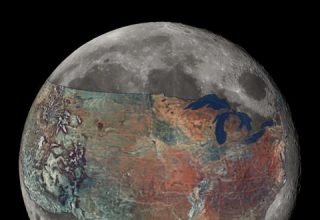
Although Albert Einstein is usually considered to be the modern Columbus, I think he has to share that title with Hermann Minkowski. Minkowski was a mathematician, who in fact, was one of Einstein’s teachers at the Polytechnikum in Zurich. In a speech to the 80th Meeting of German Natural Scientists and Physicians in Cologne on September 21, 1908, he famously announced:
Henceforth space by itself and time by itself are doomed to fade away into mere shadows and only a kind of union of the two will preserve an independent reality.
And with that, Minkowski introduced spacetime to the world and with it a new possibility not only to make sense of the Theory of Special Relativity, but also to begin to see the world we live in as a four-dimensional reality.
It’s probably impossible to put an exact date on the birth of any paradigm, but the Italian poet Petrarch’s account of his ascent of Mount Ventoux has often been cited as heralding the end of the Medieval and the beginning of the Modern periods. Written in about 1350, he describes his ecstatic experience of reaching the summit, gazing at the landscape spread out before him and discovering three-dimensional space. This may sound bizarre to anyone living in the 21st Century for whom it might seem that three dimensionality has always been a feature of reality. But consider that medieval paintings don’t portray three-dimensionality; they depict a flat, two-dimensional world. Petrarch’s account already contains the seeds of the Newtonian/Cartesian paradigm precisely because it presents the discovery of perspective. Inherent in perspective is the existence of two points in space: a “vanishing point” on the horizon and a point-of-view in the observer. And with that, the space in between comes into existence as a geometric dimension. Tellingly, in a poetic flourish, Petrarch claims he then opened his copy of St. Augustine’s “Confessions” and randomly came upon the following passage:
People are moved to wonder by mountain peaks, by vast waves of the sea, by broad waterfalls on rivers, by the all-embracing extent of the ocean, by the revolutions of the stars. But in themselves they are uninterested.
Petrarch is presenting an inner world discovery, which was revealed through an interaction with the outer world. Inner and outer space become the two poles of the three-dimensional field. The coming into being of perspective (and with it point-of-view) is one of the chief hallmarks of the mindset of Modernity. From here it is only a matter of time before science will explore the laws of that three-dimensional space (e.g. Newton’s laws of gravity), just as literature will explore the inner world of human beings living in that space (e.g. the rise of the novel) and just as philosophy will explore the dualistic and causal relationship between these inner and outer spaces (e.g. Descartes’ mind/body separation).
Download Article 1K Club
















